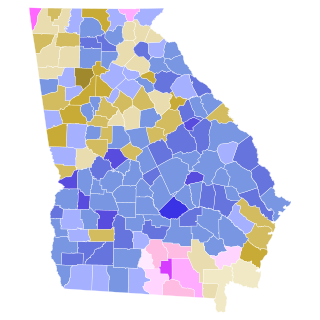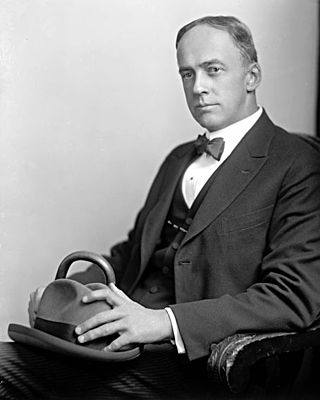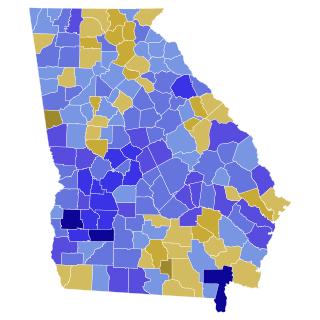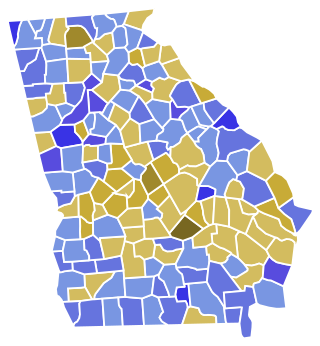
Garland Turk Byrd was United States Democratic politician from Georgia, who served as the fourth Lieutenant Governor of Georgia from 1959 to 1963, and as Senator from the 17th District in 1963-4.

The three governors controversy was a political crisis in the U.S. state of Georgia from 1946 to 1947. On December 21, 1946, Eugene Talmadge, the governor-elect of Georgia, died before taking office. The state constitution did not specify who would assume the governorship in such a situation, so three men made claims to the governorship: Ellis Arnall, the outgoing governor; Melvin E. Thompson, the lieutenant governor-elect; and Herman Talmadge, Eugene Talmadge's son. Eventually a ruling by the Supreme Court of Georgia settled the matter in favor of Thompson. Georgia's Secretary of State Ben Fortson hid the state seal in his wheelchair so no official business could be conducted until the controversy was settled.

The 1962 Georgia gubernatorial election was held on November 6, 1962.

The 1958 Georgia gubernatorial election was held on November 4, 1958.

The 1954 Georgia gubernatorial election was held on November 2, 1954.

The 1950 Georgia gubernatorial election was held on November 7, 1950. Incumbent governor Herman Talmadge won the Democratic primary over Melvin Thompson on June 28 with 49.33% of the vote and 295 out of 410 county unit votes. The primary was a rematch of the 1948 special election. This would be the last gubernatorial rematch in the state until 2022.

The 1948 United States presidential election in Georgia took place on November 2, 1948, as part of the wider United States presidential election. Voters chose 12 representatives, or electors, to the Electoral College, who voted for president and vice president.

The 1956 United States Senate election in Georgia took place on November 6, 1956. Incumbent Democratic U.S. Senator Walter F. George did not run for re-election.

The 1946 Georgia gubernatorial election took place on November 5, 1946, in order to elect the Governor of Georgia.

The 1922 Georgia gubernatorial election took place on November 7, 1922, in order to elect the Governor of Georgia.

The 1924 Georgia gubernatorial election took place on November 4, 1924, in order to elect the Governor of Georgia.

The 1926 Georgia gubernatorial election took place on November 2, 1926, in order to elect the Governor of Georgia.

The 1928 Georgia gubernatorial election took place on November 6, 1928, in order to elect the Governor of Georgia.

The 1930 Georgia gubernatorial election took place on November 4, 1930, in order to elect the Governor of Georgia.

The 1932 Georgia gubernatorial election took place on November 8, 1932, in order to elect the Governor of Georgia.

The 1934 Georgia gubernatorial election took place on November 6, 1934, in order to elect the Governor of Georgia.

The 1936 Georgia gubernatorial election took place on November 3, 1936, in order to elect the Governor of Georgia.

The 1938 Georgia gubernatorial election took place on November 8, 1938, in order to elect the Governor of Georgia.

The 1940 Georgia gubernatorial election took place on November 5, 1940, in order to elect the Governor of Georgia.

The 1942 Georgia gubernatorial election took place on November 3, 1942, in order to elect the governor of Georgia. The governor was elected to a four-year term for the first time, instead of a two-year term.




















